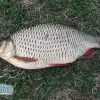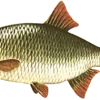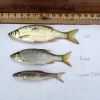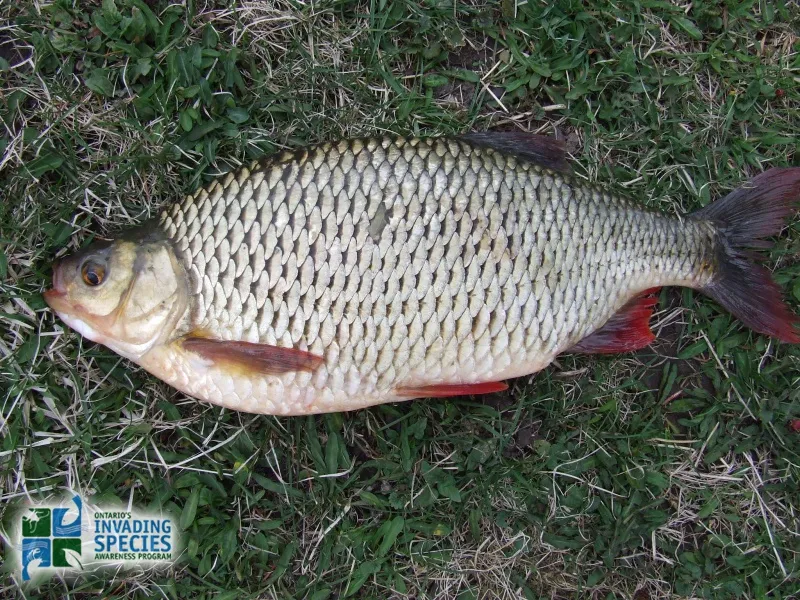X
CONTACT US
Great Lakes Center, SAMC 319
SUNY Buffalo State
1300 Elmwood Ave., Buffalo, NY 14222
wnyprism@buffalostate.edu
(716) 878.4708
SUBSCRIBE TO LISTSERV
FOLLOW US
CONTACT
Rudd
COMMON NAME:
RuddSCIENTIFIC NAME:
Scardinius erythrophthalmusORIGIN:
EurasiaDESCRIPTION:
The rudd is a somewhat stocky, deep-bodied fish with a forked tail. The mouth is distinct, with a steeply angled protruding lower lip. The scales are robustly marked, the back is dark greenish-brown and the sides are brassy yellow, tapering to a whitish belly. The pectoral, pelvic and anal fins are bright reddish-orange, and the dorsal and tail fins are reddish-brown.HABITAT:
Rudd inhabit weedy shoreline areas of lakes and rivers, and can adapt to a wide range of environmental conditions.THREAT:
The impact of the rudd’s introduction is relatively unknown. Rudd are able to breed with the native golden shiner, an important baitfish, creating hybrids which could lead to a loss of genetic diversity in golden shiner populations. Young rudd compete with native species for habitat and food, such as algae and small invertebrates. While adult rudd can eat large amounts of aquatic plants along shorelines, which can degrade spawning and nursery habitat for native fish such as northern pike, muskellunge and yellow perch.MANAGEMENT:
Since young rudd can resemble baitfish, it is important to drain water from bait buckets, bilges and livewells before transporting them to new areas, and to dispose of unwanted live bait in the trash. Be sure to clean and dry all equipment, and never use rudd as bait.
WNY PRISM PRIORITY:
Tier 4 - Local Control
ADDITIONAL RESOURCES:
Rudd is a regulated species in New York State - for more information on Prohibited and Regulated Species, visit http://www.dec.ny.gov/animals/99141.html.
NYS Prohibited and Regulated Species - Part 575:
PATHWAYS OF INVASION:
Rudd was primarily introduced through use as a bait fish. They were also introduced to some waters as a potential food source or for sport fishing.
REGIONAL DISTRIBUTION:
Common





